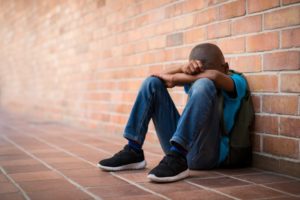Limiting suspensions and expulsions in favor of “restorative practices” that promote dispute resolution is creating different outcomes for students in Illinois schools.


Limiting suspensions and expulsions is creating different outcomes for students in Illinois schools.
Legislation adopted by lawmakers in 2015 and implemented last year limits suspensions and expulsions for students in favor of “restorative practices” that promote dispute resolution, NPR Illinois reports.
The result has been a drastic decrease in suspensions, and a far different approach to discipline after years of zero-tolerance policies.
Springfield high school football player Isaiah Cooper explained how previous policies led to his expulsion for an innocent mistake. Cooper tossed a milk carton into a door jamb on his way out of the cafeteria one morning, only to find out the carton hit a girl in the head by accident.
“’He was just goofing off’—those were (the assistant principal’s) exact words,” said Cooper’s mother, Lindsay Chisam. “He ‘pulled back his arm and chucked it down the hallway’ is what she says, and she said he didn’t even stick around long enough to see if he’d hit anything.”
Cooper wrote the girl an apology, but her parents pressed charges and school police charged him with battery. He was eventually expelled for the remainder of his sophomore year, as well as his entire junior year.
NPR Illinois points out that the situation could have played out differently with new restorative practices in place.
“’Under new policies created by Senate Bill 100, exclusionary discipline of more than three days could be used only in cases where ‘the student’s continuing presence in school would either (i) pose a threat to the safety of other students, staff, or members of the community or (ii) substantially disrupt, impede, or interfere with the operation of the school,’ and after all other interventions have been exhausted,” according to the news site.
Statewide, suspensions decreased from 10,077 before the new law to 7,643 last year, many replaced with restorative conversations between students and administrators and parents designed to address the underlying issues involved in student conflicts.
“Sometimes, it’s a conversation and the student gets returned to class,” social worker Brielle Siskin told NPR. “However, often my goal is to bring the student and the teacher or the other student they had a conflict with together to have a conversation to really resolve the issue and talk about it so that it doesn’t happen again.”
Veteran Champaign teacher Jennifer White put it another way.
“The way we interact with students now, I almost think is a lot more like we interact with our own children,” she said. “You know, if my son does something disrespectful or that he needs some correction on, I’m going to take time to build our relationship and to teach him those things. And so we’re looking at responding to student behavior now, it is about the student as the entire person, and not just how they are academically in your class.”
The new approach plays into an observation University of Virginia sociologist James Davison Hunter makes in his book The Death of Character, that “human beings are anything but automatons.
“We reflect, ponder, act in the world around us in ways that have consequences,” Hunter wrote.
Restorative practices are an effort to treat students less like automatons and more like human beings who must face the consequences of their actions and take responsibility for restoring relationships.
The Centre for Justice and Reconciliation offers other examples of how a different approach to student discipline has impacted other students, as well as resources for schools and educators looking to implement restorative practices.